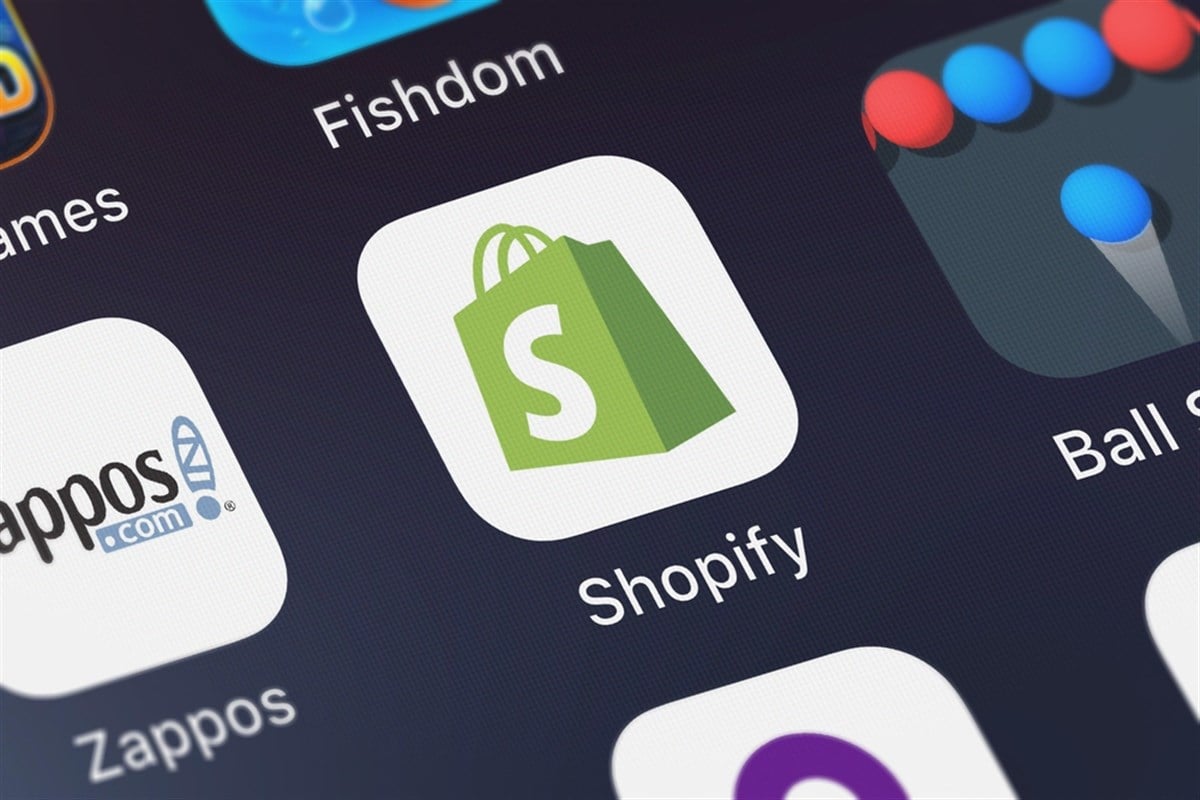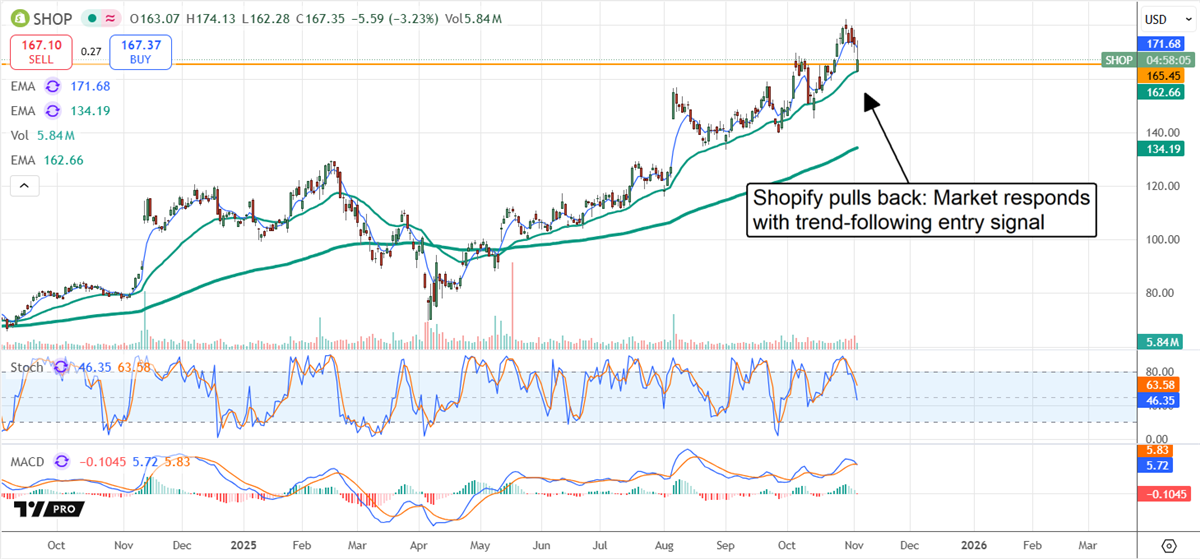Shopify Pullback Sets Stage for 20% Rally to $200 Target

Shopify’s (NASDAQ: SHOP) flywheel will drive its stock price to new highs because growth investments beget growth, growth is outperforming and accelerating, and free cash flow is robust, allowing for targeted technology investments that pay off. Not only is the fundamental story bullish, but it is also driving a robust analyst trend. The data tracked by MarketBeat shows 46 analysts with current reports, a significant number given that it is among the most-covered stocks on Wall Street.
Market leaders such as NVIDIA (NASDAQ: NVDA) and Alphabet (NASDAQ: GOOGL) have 49 and 48 analysts covering their stocks, respectively, compared to approximately 20 for the average S&P 500 company.
And the bullish analyst trends are unlikely to end in Q4. The Q3 release provided the market with an excuse to take profits, but did not alter the outlook; it only improved it. The takeaway is that Shopify’s coverage is strong and has increased over the past year, indicating an influx of investor capital, with sentiment firming and the price targets increasing.
The price target trend is of particular interest, as the consensus, as of early November, is up nearly 100% over the preceding 12 months, with the high end indicating a double-digit upside.
There is a higher-than-average confidence level at the high end, with four recent revisions pegged at $200, and a higher target will likely be forecasted before the end of the year. Regardless, a move to $200 would represent 20% upside and mark a fresh all-time high.

Shopify Outperforms in Q3, Raises Guidance, Free Cash Flow Grows
Shopify had a solid quarter in Q3 with revenue growth topping 31%, outperforming the consensus by 300 basis points, and free cash flow improving. The revenue growth was underpinned by a 38.2% increase in Merchant Services and 32% increase in gross merchandise volume.
Subscriptions, the smaller segment, grew by a less robust 14.6%, while monthly recurring revenue (MRR) grew by 10.3%. The 10.3% increase in MRR led to the market’s post-release sell-off. Analysts were expecting more.
The margin news is mixed. The company experienced margin pressures at the gross and operating levels but managed to control them. The takeaway is that margins were compressed, but not as much as expected, resulting in a net income increase of $264 million, better than forecast.
The critical detail is that free cash flow margin came in at 18% with free cash flow up by 20.4% year-over-year (YOY), allowing for reinvestment and balance sheet improvements.
The balance sheet is a fortress. The highlights from Q3 include increased cash, current, and total assets, stable liabilities, and increasing equity. Equity improved by nearly 9% YOY and is expected to continue rising in Q4 and in the subsequent fiscal year. Regarding leverage, total liabilities are less than 0.3x equity, making it among the healthiest balance sheets in the tech industry.
Shopify’s Uptrend Is Intact: Price Pullback Equates to Opportunity in Early November
Shopify’s price pullback may indicate a weakening market, but that is not reflected in the charts. The post-release pullback tested support at the prior high, which is now a critical support target within an uptrend and support was confirmed.
Shopify may consolidate at this level, but in this scenario, a move significantly lower is unexpected. The more likely outcome is that Shopify’s market follows through on the trend-following signal seen on the daily charts and moves up to retest resistance at the all-time high, potentially setting a fresh all-time high before the year’s end.
The most significant risk for retail investors is the institutions. They own about 70% of the stock and are a formidable force that retail investors are unlikely to overcome. The activity in 2025 has been mixed, with selling roughly equal to buying.
The balance was bullish ahead of the release and likely to remain so, given the growth outlook and cash flow, but could turn bearish and cap gains. The stock is highly valued, trading at 20x its 2035 outlook, suggesting its growth is already priced in.
Learn more about SHOP


